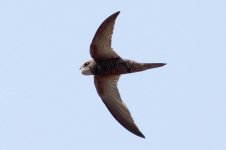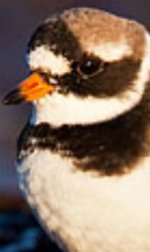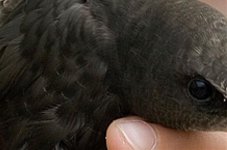lewis20126
Well-known member
In this case, the bird above wouldn't stick out in a flock of apus around here, looking very like lots of the birds I'm seeing at the moment. But as I hope is clear from the above, that's not to say it isn't pallid, but I'd never call it here unless pallid is actually a common visitor - which I doubt.
In Spring (March-April) I have found individual Pallids do stick out from the massive flocks of Common Swifts in good light and have seen them at this season in both Cameroon and Liberia. Good light (flat, overcast preferred) is however needed and I prefer them below eye level. I'm not sure about autumn though with all those scaly juveniles...
cheers, alan







